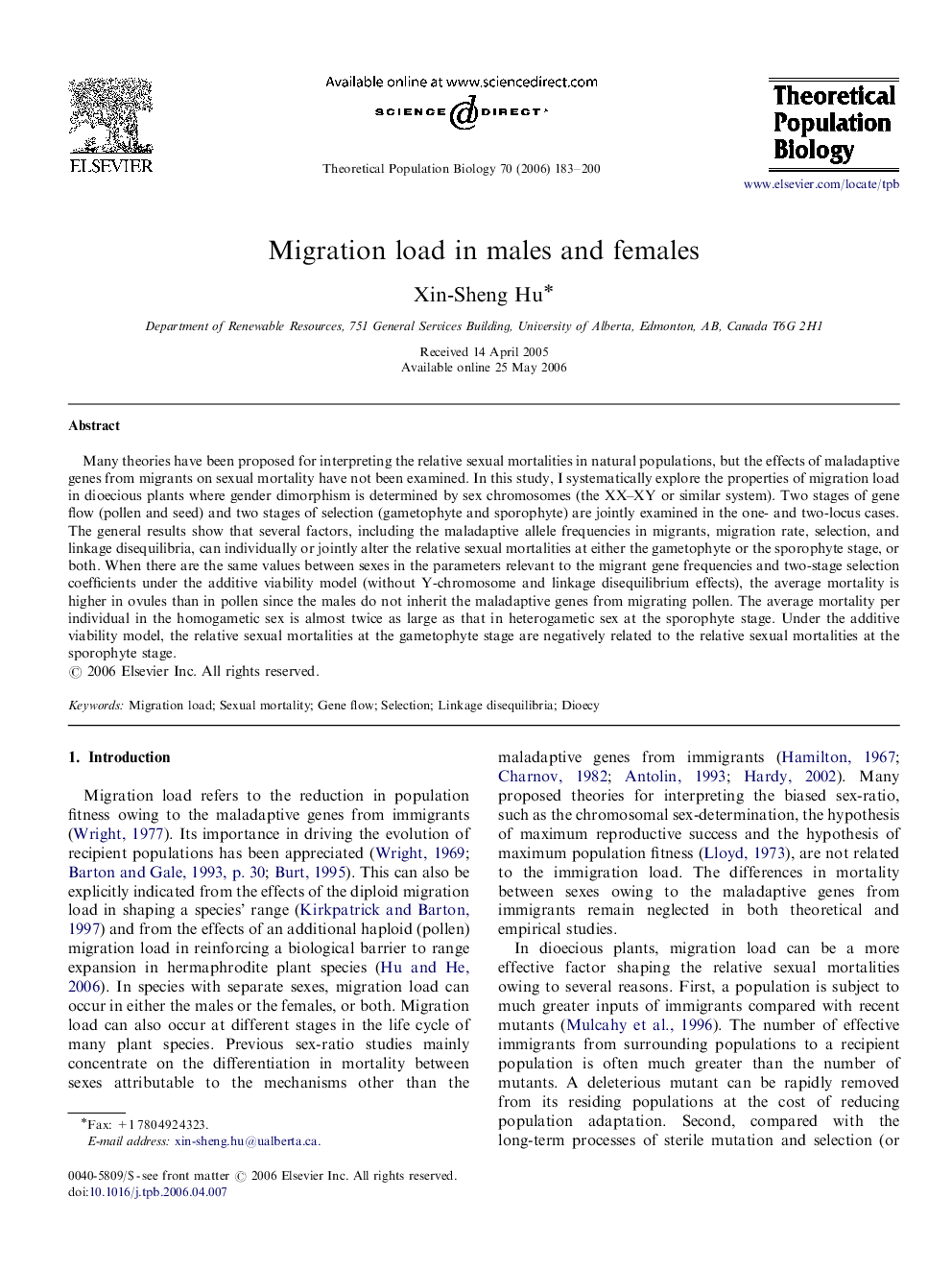| Article ID | Journal | Published Year | Pages | File Type |
|---|---|---|---|---|
| 4503014 | Theoretical Population Biology | 2006 | 18 Pages |
Many theories have been proposed for interpreting the relative sexual mortalities in natural populations, but the effects of maladaptive genes from migrants on sexual mortality have not been examined. In this study, I systematically explore the properties of migration load in dioecious plants where gender dimorphism is determined by sex chromosomes (the XX–XY or similar system). Two stages of gene flow (pollen and seed) and two stages of selection (gametophyte and sporophyte) are jointly examined in the one- and two-locus cases. The general results show that several factors, including the maladaptive allele frequencies in migrants, migration rate, selection, and linkage disequilibria, can individually or jointly alter the relative sexual mortalities at either the gametophyte or the sporophyte stage, or both. When there are the same values between sexes in the parameters relevant to the migrant gene frequencies and two-stage selection coefficients under the additive viability model (without Y-chromosome and linkage disequilibrium effects), the average mortality is higher in ovules than in pollen since the males do not inherit the maladaptive genes from migrating pollen. The average mortality per individual in the homogametic sex is almost twice as large as that in heterogametic sex at the sporophyte stage. Under the additive viability model, the relative sexual mortalities at the gametophyte stage are negatively related to the relative sexual mortalities at the sporophyte stage.
